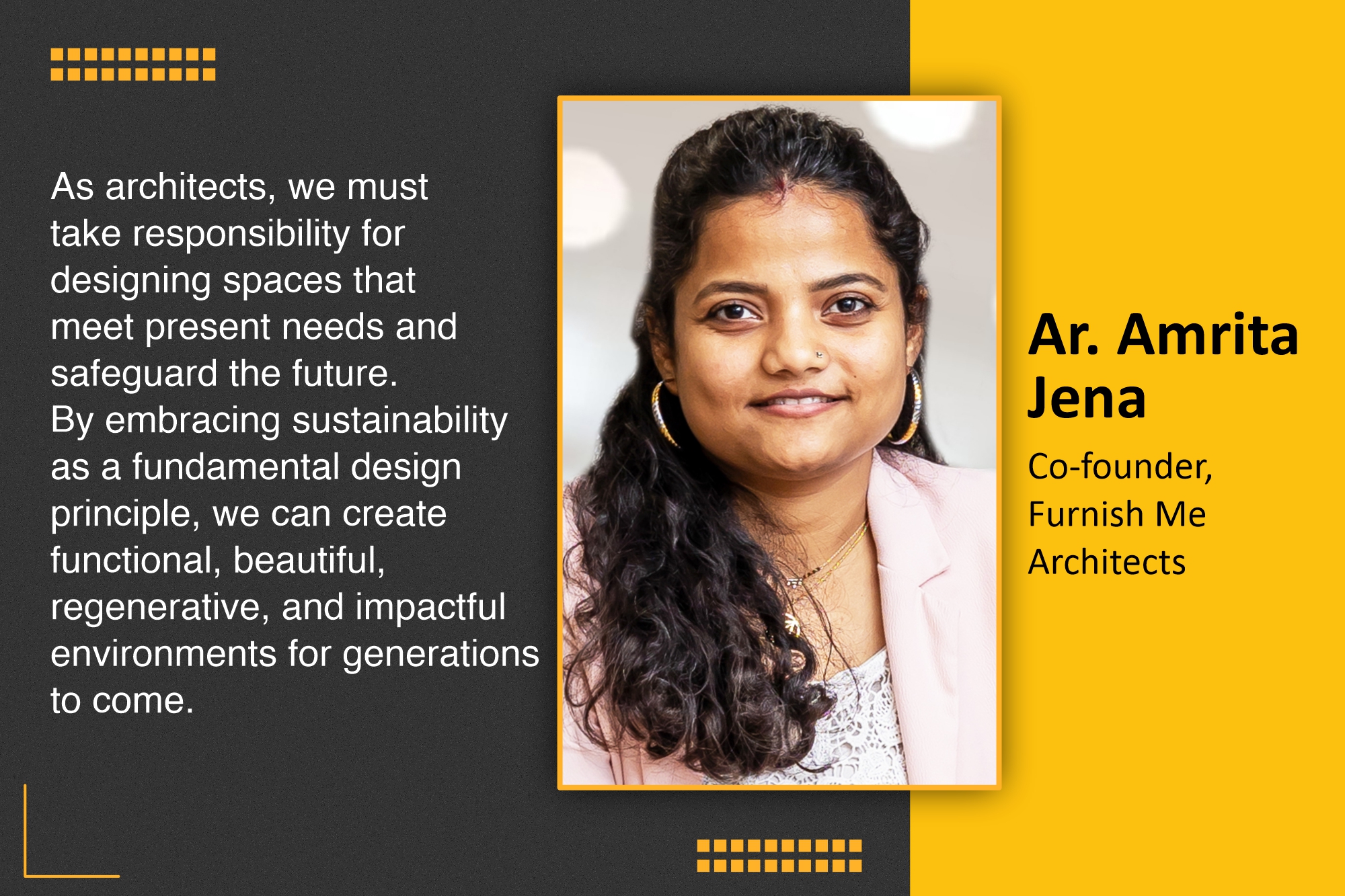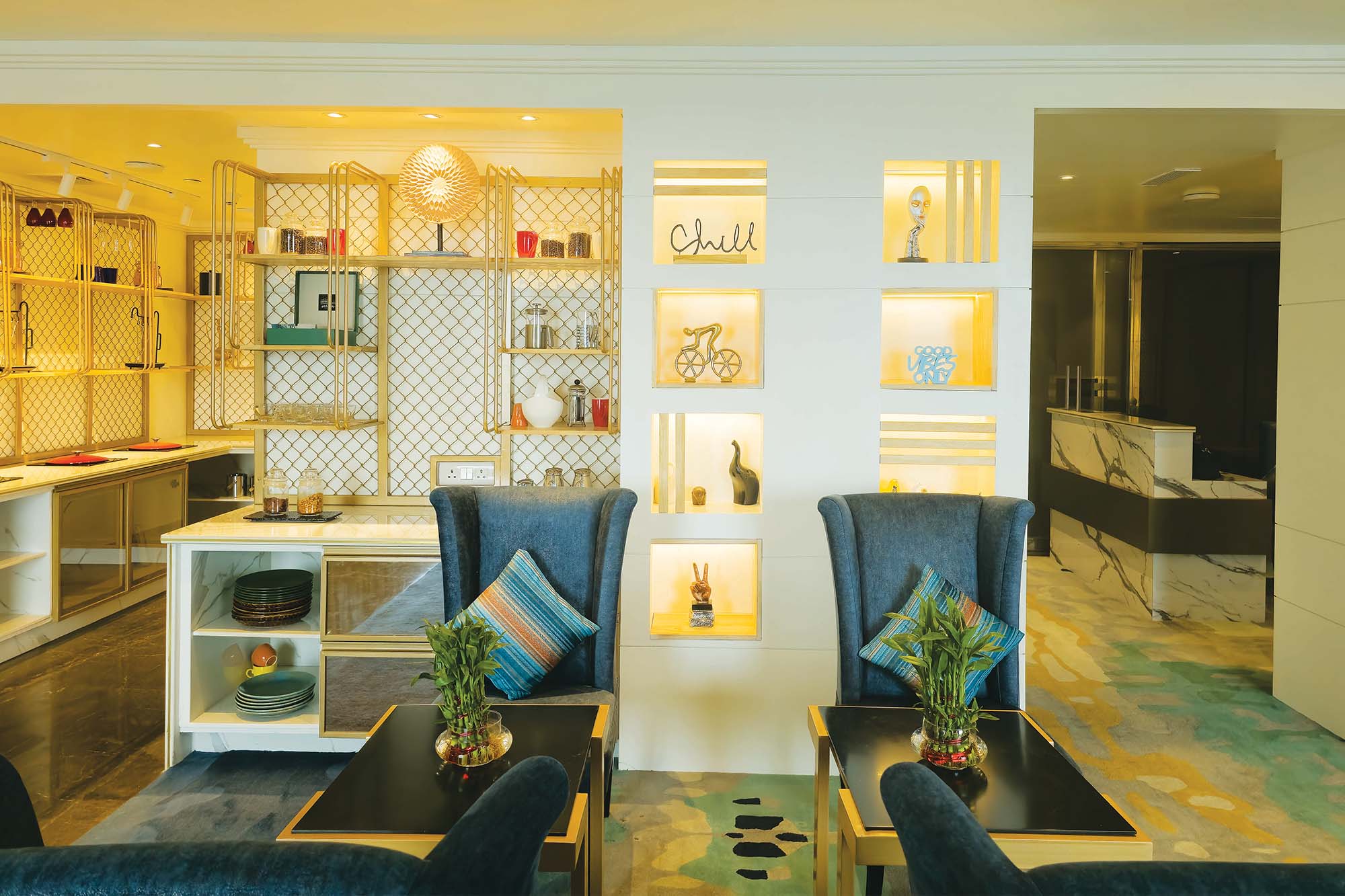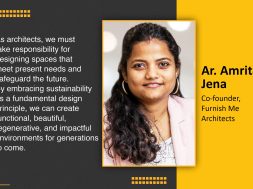Let’s start at the ground level

Ar. Amrita explores the pressing need for the architecture and design industry to adopt sustainable architectural practices, including energy-efficient construction and net-zero buildings that can redefine the future.
With rapid urbanisation and the built environment significantly impacting global carbon emissions, architects can redefine the future by integrating sustainable solutions into their designs.
Understanding energy efficiency in design
Energy efficiency is at the core of sustainable architecture. Minimising energy consumption and maximising performance through smart design choices, material selection, and innovative technologies are the heart of energy-efficient construction. The key to achieving these goals is adopting passive design strategies such as optimal building orientation, natural ventilation, and daylight harvesting, which reduce the dependence on artificial lighting and HVAC systems. Efficiency may be further enhanced with high-performance insulation, double-glazed windows, and deploying energy-efficient appliances. These ensure lesser power consumption without compromising occupant comfort.
The path to net-zero buildings
Net-zero or zero-energy buildings generate as much energy as they consume, minimising their carbon footprint. Achieving net zero requires a two-step approach: reducing energy demand and integrating renewable energy sources. The path to net zero is through technologies and integrating smart building management systems (BMS). Technologies such as solar photovoltaics, wind energy, and geothermal heating systems are becoming increasingly viable and accessible. Smart BMS optimise energy use by automating lighting, cooling, and heating based on real-time occupancy and environmental conditions.
The construction sector must also adopt sustainable materials like bamboo, reclaimed wood, and low-carbon concrete to reduce embodied carbon in buildings. Modular and prefabricated construction methods are proving effective in minimising construction waste and improving efficiency. Our Crowne Plaza Club Lounge Renovation project and Science Museum in Odisha are classic examples of how energy efficiency and aesthetics can be skillfully blended.

Sustainability as a design philosophy
This includes strategies such as rainwater harvesting, greywater recycling, drought-resistant landscaping, and adopting green roofs and vertical gardens.
Role of AI in sustainable architecture
AI-powered tools such as Architecture aid in predictive modelling, energy simulations, and automated design optimisations, which enable architects to analyse building performance, predict energy consumption, and recommend sustainable materials. AI-driven generative design also allows for creating adaptive and energy-efficient building forms that respond dynamically to environmental conditions. AI-based smart systems can track real-time energy consumption, adjust HVAC operations based on occupancy patterns, and enhance lighting control that reduces unnecessary power usage.
The way forward: Sustainability must start at the ground level
The journey toward energy-efficient, net-zero, and sustainable design requires collaboration between architects, engineers, policymakers, and the community. Government incentives, building codes, and green certifications such as LEED, GRIHA, and IGBC are pivotal in encouraging sustainable practices. Sustainability should not be limited to large-scale projects alone—it must begin at the ground level with small individual projects, including residences and offices. By integrating energy-efficient and sustainable practices into every project, no matter how small, we can create a ripple effect that can lead to broader environmental change.
For more details, visit: https://www.furnishme.in/
Cookie Consent
We use cookies to personalize your experience. By continuing to visit this website you agree to our Terms & Conditions, Privacy Policy and Cookie Policy.










